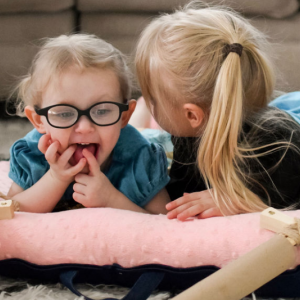How to Make the Jump from Nursery to Toddler Room

Your baby is growing up before your eyes, which means it’s time to convert his or her adorable nursery into a room more suitable for the toddler years. Now that your child is more curious, active and independent than ever, your toddler needs a room that provides the space to explore and exercise their newfound sense of freedom and autonomy.
The move from baby to toddler room is the first of many big steps you’ll take with your child’s room, and you likely want nothing more than the perfect space for your little one. For tips on how to manage this progression with style, ease and functionality, this guide is here to help.
The Crib-to-Bed Transition
A toddler bed doesn’t just have to be cute, it also has to be safe. As a parent of a newborn, you were well-acquainted with safety risks and features of various cribs, as well as the bedding and blankets that were safe for use next to your sleeping child. Toddler beds have similar safety requirements, with a few differences including guidelines for mattress sizes and safety rails.
Your crib may convert into a toddler bed by lowering the mattress down to a level at which your toddler can climb in or out independently. If your crib is not convertible, or you’d rather upgrade to a completely different bed size for your toddler, be sure to avoid bunk beds and opt for a toddler-specific frame or a twin-sized bed with protective guard rails.
Safety Features
Now that your little one is moving around to explore his or her world, you will need to take safety considerations in mind. Plenty of the baby-proofing you took care of when your little one was born will transition well into toddlerhood, but additional child safety measures should be taken. Any new furniture should be bolted to the wall, small toys need to be stored out of reach and outlet covers should be placed.
Toy Storage
The toddler stage marks the beginning of independent play, so it’s important that your child has access to the toys and gadgets that are loved the most. Consider open shelving or labeled bins to help your child reach his or her belongings with ease. If you don’t have a separate playroom, it helps to dedicate a portion of the room for play, where toys have a dedicated home.
Too many toys at toddler level, however, can get overwhelming. Toddlers become overstimulated fairly easily, and your child needs a relaxing, uncluttered space to play. Keep your toddler’s toys at a minimum, and focus only on things that he or she really loves to play with.
Book Display
Though your child is at least a year or more away from reading, books are a great way to develop letter recognition, concepts of print and story sequencing. Find a way to display your toddler’s favorite books in a way that he or she can grab and browse them without your help. When you find a low shelf to display your child’s books, your toddler may also appreciate a cozy, safe reading nook nearby to enjoy them.
Eye-Level Accessibility
Now is the time when your child will start not only to be capable of doing things unassisted, but it’s also the time when he or she may demand the opportunity to do so. To best facilitate this self-reliance, keep as many things at toddler level as possible. Put his or her clothes closer to the ground rather than stored up in a closet, or make it easier for a wardrobe or dresser to be opened with smaller hands.
Design Personality
Your child uttered his or her first words and has begun to display interests and inclinations toward certain objects, stories, animals, colors or experiences. Let your child’s interests be the inspiration for his or her bedroom, even working together to choose different elements to be included in the space. It’s your child’s room after all, and he or she should feel a sense of ownership and belonging in this important space.

